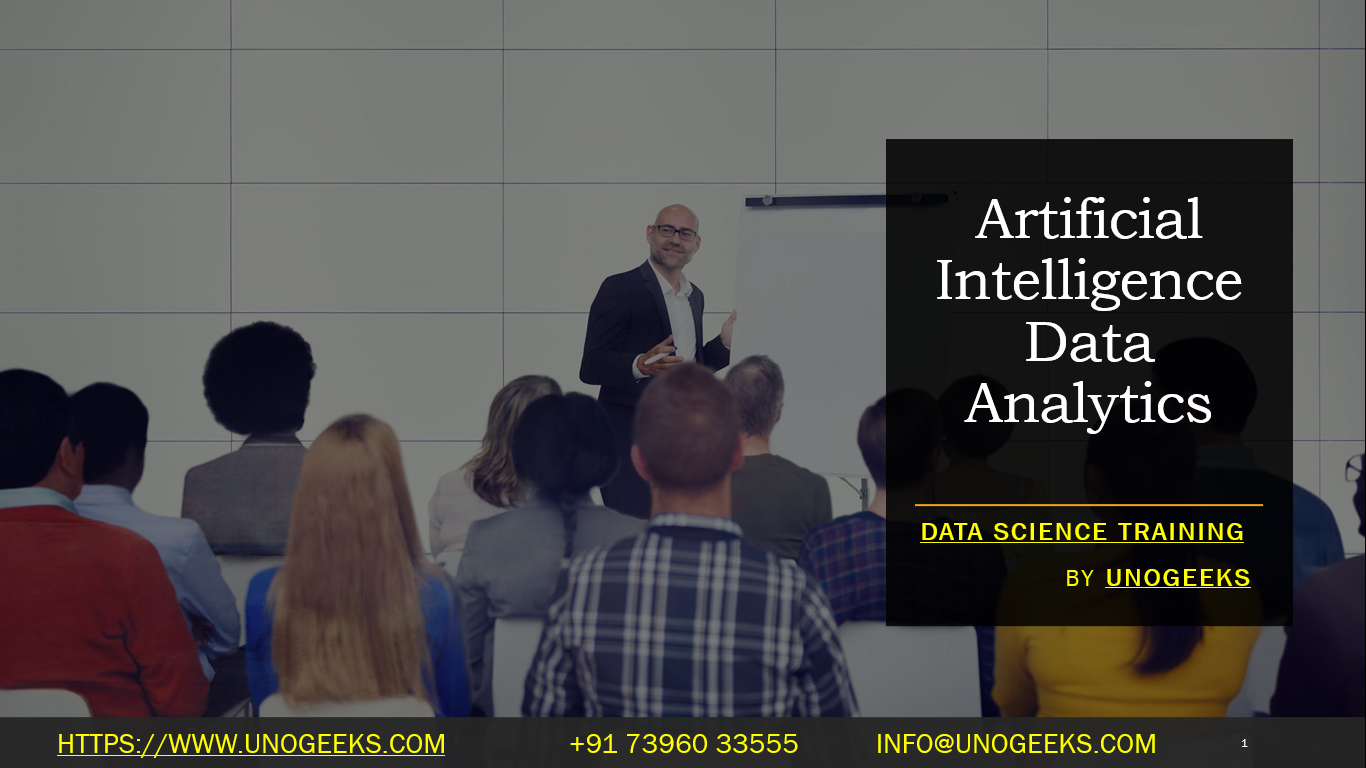Artificial Intelligence Data Analytics
Artificial Intelligence (AI) and Data Analytics are two intertwined fields that are pivotal in the current technological landscape. Here’s a comprehensive overview of these domains:
Artificial Intelligence (AI)
AI involves creating algorithms and systems that enable computers to perform tasks that typically require human intelligence. These tasks include learning, reasoning, problem-solving, perception, language understanding, and more.
Subfields of AI:
- Machine Learning (ML): Involves algorithms that allow computers to learn from and make predictions or decisions based on data.
- Deep Learning (DL): A subset of ML that uses neural networks with many layers (deep networks) to analyze various factors in large volumes of data.
- Natural Language Processing (NLP): Focuses on enabling computers to understand, interpret, and respond to human language.
Applications:
- Automation: From manufacturing to business processes.
- Healthcare: Diagnostic systems, treatment planning, personalized medicine.
- Finance: Risk management, fraud detection, automated trading systems.
- Robotics: Autonomous vehicles, drones, robotic assistants.
Data Analytics
Data Analytics involves analyzing raw data to find trends and answer questions. It encompasses a range of techniques from various fields like statistics, mathematics, and computer science.
Types of Data Analytics:
- Descriptive Analytics: Analyzes past data to understand what happened and why.
- Predictive Analytics: Uses statistical models and forecasts to predict future events.
- Prescriptive Analytics: Suggests actions you can take to affect desired outcomes.
- Diagnostic Analytics: Focuses on discovering the causes of past outcomes.
Tools and Technologies:
- Languages: Python, R, SQL.
- Data Visualization Tools: Tableau, Power BI.
- Database Management: SQL databases, NoSQL databases, data warehouses.
Intersection of AI and Data Analytics
AI and Data Analytics often intersect. AI can enhance data analytics with advanced model prediction capabilities, while data analytics can provide the insights needed to train AI models. This synergy is evident in:
- Predictive Analytics: Using ML models to predict future trends.
- Automated Data Analysis: Using AI algorithms for data cleaning, data integration, and data analysis.
- Business Intelligence: Enhancing traditional BI tools with AI for more advanced insights.
Learning and Career Path
- Education: Degrees in fields like computer science, statistics, or data science.
- Online Courses: Platforms like Coursera, edX, and Udacity offer courses in AI and data analytics.
- Certifications: Professional certifications from vendors like IBM, Microsoft, or SAS.
- Skills Development: Programming, statistical analysis, machine learning, data visualization, and domain-specific knowledge.
Future Trends
- Ethical AI and Data Privacy: As these fields grow, ethical use of AI and data privacy becomes increasingly important.
- Augmented Analytics: Using AI to enhance data analytics capabilities.
- Quantum Computing: Potential to revolutionize AI’s processing capabilities.
Data Science Training Demo Day 1 Video:
Conclusion:
Unogeeks is the No.1 IT Training Institute for Data Science Training. Anyone Disagree? Please drop in a comment
You can check out our other latest blogs on Data Science here – Data Science Blogs
You can check out our Best In Class Data Science Training Details here – Data Science Training

———————————-
For Training inquiries:
Call/Whatsapp: +91 73960 33555
Mail us at: info@unogeeks.com
Our Website ➜ https://unogeeks.com
Follow us:
Instagram: https://www.instagram.com/unogeeks
Facebook:https://www.facebook.com/UnogeeksSoftwareTrainingInstitute
Twitter: https://twitter.com/unogeeks
